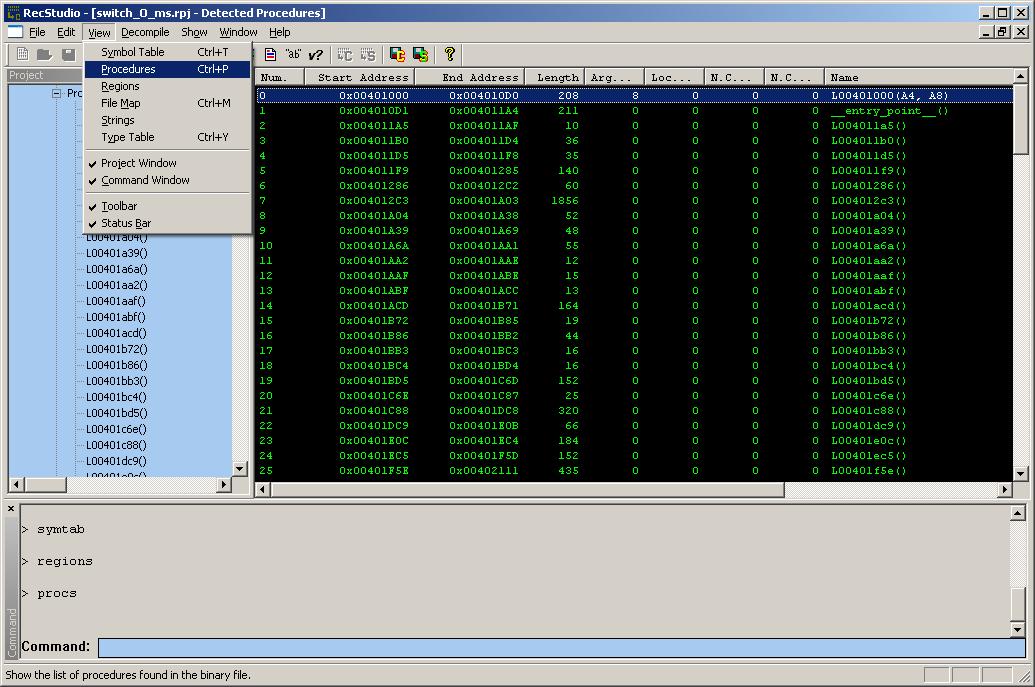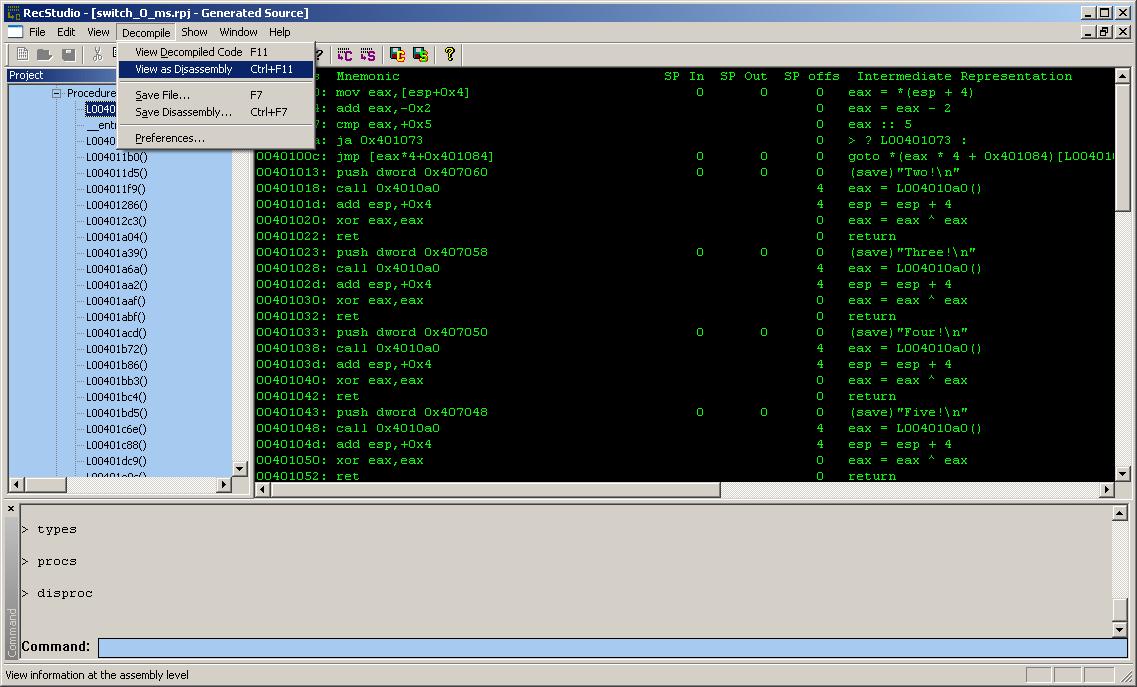The first step to decompilation is to load the executable file into
RecStudio.
Use the "File+New Project..." menu to locate the file you want to decompile.
If you already saved the information from a previous decompilation
session, use the "File+Open Project..." to load the project file.
If loading an executable file, REC will attempt to detect which area
of the executable file are code and which are data. Additionally, ASCII
strings and procedure entry points are detected.
This process can take a few minutes, depending on the size of the file
you are decompiling, and on the speed and memory size of the host processor.
When REC has finished extracting the information, the Project view
will show an outline of the binary file. Also, the items in the "View"
menu are now enabled. The list of detected procedures is shown in the Project
view, or, with more details, in the window opened by the menu "View+Procedures":

Double-clicking on a procedure entry in the list will show
the decompiled code for that procedure.
As can be seen from the first image, the decompilation process can
only show fake names for addresses and local variables. Many times the
decompiler will not be able to decide whether a temporary variable has
been generated by the compiler or is a true local variable from the original
source (for example the "eax" register in the first image should have been
removed by the decompiler).
If the executable file has symbolic information, the procedure list
will show the names and arguments in the procedure code and possibly local
variables will have the correct name and types.
We can quickly switch between the C-like decompiled code and the disassembly
code by using the "Decompiler+View Decompiled Code" menu item (or by hitting
F11) and the "Decompiler+View as Disassembly" menu item (or by hitting
Ctrl+F11).

If, by looking at the decompiled code, the user is able to determine
the name of a function or of a parameter, then information about the procedure
can be changed in the Procedure window (or by editing the Project file
and reloading the project into RecStudio).
By iteratively inspecting the decompiled code and providing more information,
the quality of the code will improve dramatically.
Sometimes the decompiler is not able to decide whether an area of the
binary file is code or data. If, by looking at the decompiled code, the
user determines that an area has been treated as code but it is in reality
a data area, the user can change the list of regions in the project file
(the lines starting with "region: "), or in the region list using the "View+Regions"
menu item:

The same process can be used to improve the information about ASCII
strings detected by the decompiler. The string information can be accessed
via the "View+Strings" menu item, or through the lines marked "string:
" in the project file:

Complex types (structures, array, typedefs etc.) can be provided in
a prototype file (specified by the "type: " commands in the project file).
You can see the list of types currently known by REC using the "View+Type
Table" menu item:

Double-clicking on a type name will show the definition of that type.
After enough information has been discovered about the binary file,
it is possible to decompile the entire binary file to a text file using
the "Decompile+Save file..." menu. Similarly, the entire binary file can
be disassembled to a text file using the "Decompile+Save Disassembly...".
Remember to save the information you entered during the decompilation
session by using the "File+Save Project" menu item.
Multiple binary files can be decompiled in batch mode. This feature
is mostly used to debug the decompiler, but it can also be used by end
users after a new version of the decompiler has become available to re-create
decompiled files. The "File+Run Batch File..." menu item will load a text
file with a list of binary files or project files to be automatically processed.
See the file "tests.rbt" file in the tests directory for a sample
text file.
From version 2.1 it's possible once again to run the decompiler in batch mode.
When you provide the +batch option followed by a batch file name
(same as provided to the "File+Run Batch File..." menu in interactive mode)
the decompiler will automatically decompile all files listed in the batch
file and then exit.





